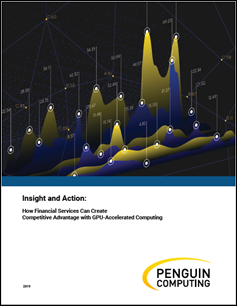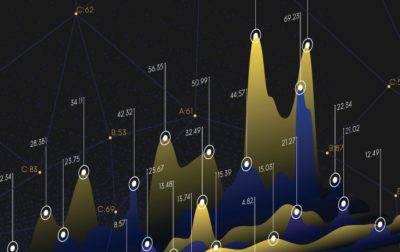It seems big data is exploding in every sector, but in none is this more of a reality than in the finance and insurance businesses.

Download the full report.
The problem is that time-to-insight is critical to institutions like banks, credit card companies, hedge funds and more. For example, these institutions need to conduct real-time personalization for credit scoring, risk modeling and other customer-specific applications, execute smarter trades, increase profitability, eliminate fraud, reduce exposure, or implement other data-intensive projects.
But the sheer amount of data companies need to sift through to find insights and trends that could impact their company is making extracting business value difficult.
In light of these challenges, many are looking to recent improvements in technology to help them transform their data into financial gain and competitive advantage.
Historically, expensive CPUs have been used in the financial industry to achieve the processing power needed for today’s computing functions.
A single GPU can offer the performance of hundreds of CPUs for certain workloads, resulting in a profound paradigm shift.” — Penguin Computing
But according to a new whitepaper from Penguin Computing, “a new era of supercomputing” has arrived — driven primarily by the emergence graphics processing units or GPUs. The tools once specific to gaming are now being used by investment and financial services to gain greater insights and generate actionable data.
In the finance and insurance sectors, the face of industry-standard risk management and algorithm-based trading, for example, are being redefined by GPUs. Now, suspicious activities or risk exposure can be identified in seconds rather than hours.
Penguin Computing asserts GPUs are capable of putting an end to sluggish, painful data analytics and replacing it with near realtime analysis. This capability is only going to become more and more important with the growing prevalence of machine learning and artificial intelligence.
So what is GPU-accelerated computing? According to the new report, GPU-accelerated computing occurs when a GPU is used in combination with a CPU, with the GPU handling as much of the parallel process application code as possible.
If your system design team is experienced with building both CPU- and GPU-based systems and the storage racks required for this level of data analytics, moving to a GPU-accelerated strategy could improve performance by measures including faster compute time, and reduced hardware requirements.
The new report from Penguin covers the following topics:
- What is GPU-accelerated computing?
- Roles of CPUs vs GPUs
- Powering artificial intelligence
- Potential costs and cost avoidance
Download the full white paper from Penguin Computing, “How Financial Services Can Create Competitive Advantage with GPU-Accelerated Computing,” to learn how GPUs are spurring innovation and changing how today’s finance companies address their data processing needs.




